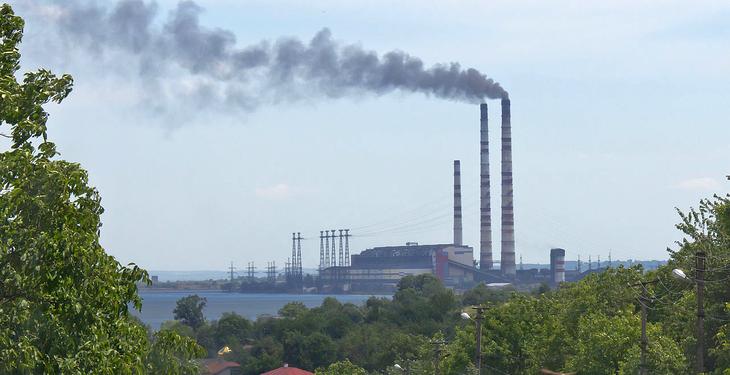The price of carbon certificates raised by 62% over the last 12 months, and the pressure on European polluting companies is increasing sharply. The EU bloc applies the European carbon emissions scheme (ETS), which involves trading these allowances and requiring large carbon emitters to buy them. In operation since 2005, the ETS covers more than 11,000 heavy-energy-using power stations, factories and airlines, representing around 40% of the EU’s greenhouse gas emissions, writes Neil Kellard, Dean, Professor in Finance, Essex Business School, University of Essex, for theconversation.com. He believes that in order to meet EU climate change targets, the ETS prices will need to be more like €40 by 2030 and close to €250 in 2050, as a study commissioned by the French association of large companies – AFEP concluded in January.
This a substantial cost imposed on EU firms, Neil M. Kellard admits, either to pay for allowances or to invest in low carbon technologies. However, companies based outside the EU will have a hefty competitive advantage unless they face similar regulatory controls in their own countries. Similarly, if around one ton of CO2 is emitted to the atmosphere for the coal-based generation of a MWh of electricity, the import of electricity produced outside the European Union by burning coal would cost EUR 30 more per MWh. At the current prices on the DAM coupled market where Romania is part of, the carbon tax could mean an extra 60% to the base cost.
This is why the European Commission, the EU’s executive branch, plans to present its carbon border levy (the Carbon Border Adjustment Mechanism) in June 2021, as part of its Green Deal planning. Frans Timmermans, the first vice-president of the European Commission, recently stressed: “It’s a matter of survival of our industry. So, if others will not move in the same direction, we will have to protect the European Union against distortion of competition and against the risk of carbon leakage”.
Although its details are still undecided, the carbon border levy is expected to charge imports into the EU at an amount related to the emissions trading system price. As EU Commission official Benjamin Angel notes, this could mean setting a carbon amount per product and multiplying it by the ETS price. For example, given production of each tons of steel typically generates around 1.9 tons of CO₂ emissions, if we assume an ETS price of €30 then a firm would pay €57 extra to import it.
Having such a levy in place would send a strong signal to EU firms that potentially expensive investments in environmentally beneficial technologies would not result in undercutting, either by non-EU rivals that enjoy looser regulations, or by firms relocating to outside the EU – the so called “carbon leakage” that Frans Timmermans mentions.
Combining the EU ETS with a border levy is a sensible and workable strategy, says Neil M. Kellard, providing a long-term context for firms that encourages the reduction of emissions by pricing in the pollution they produce. The benefits of a border levy may also spill over to outside the EU in at least one of two ways. First, and most obviously, non-EU firms that wish to export into Europe will be encouraged to reduce emissions to limit their charge. Secondly, other governments and regulatory authorities will be watching closely to see if the approach is workable and this could see the spread of cap-and-trade agreements more globally.
Of course, less optimistically, the levy could result in protectionist moves by other trading blocs. It is not at all simple to identify a scheme that respects the rules of global trade (WTO) and does not entail retaliation measures from some trading partners who already suspect that the EU could use this mechanism not to equitable share the costs of a product’s carbon footprint, but to disguise some protectionist measures. It is clear, however, that first of all such a mechanism will lead to higher prices for some of the products imported into the European Union.
